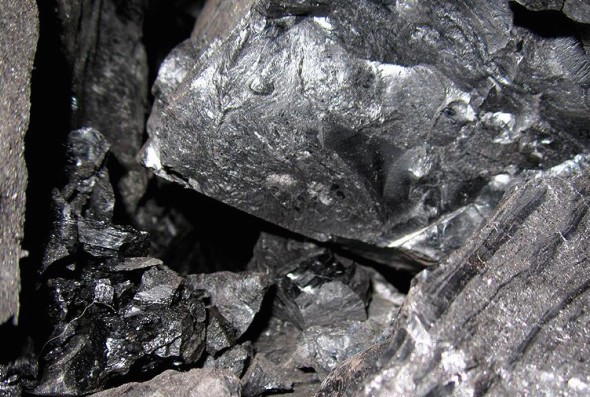Paris Climate Agreement Deals a Crushing Blow to Coal
As worldwide demand for coal stalls, some experts believe the industry is now in such dire straits that it won’t be able to compete with renewables in future.
By Paul Brown / Climate News Network

Investors are being warned to steer clear of coal because assets could be left stranded in the ground. (Alexander G via Flickr)
This piece first appeared at Climate News Network.
LONDON — After a decade of aggressive growth in demand, the market for coal has stalled and is unlikely to recover, according to the International Energy Agency (IEA).
Its report on the medium-term coal market says that demand in China — which uses 50% of the world’s coal — has begun to fall. And while other growing economies such as India will use more, this will not make up the difference as worldwide demand will level off over the next five years.
But the outlook for coal could be even gloomier than the IEA suggests. Its report was written before the outcome of the Paris Agreement on climate change, which led to some of the largest coal users vowed to cut their carbon dioxide emissions much further than many had predicted.
Other commentators believe that not only has global demand for coal already peaked, it will begin a steep downward trend, leaving most of the world’s coal in the ground.
Bleak outlook
The US-based Institute for Energy Economics and Financial Analysis believes the outlook for coal is bleak. It says the Paris Agreement will accelerate the trend away from fossil fuels — and particularly coal — towards renewables, storage of energy and energy efficiency.
Its report talks of declining demand, excess supply, under-utilised rail and coal export terminals, excessive borrowing by companies, and stranded assets of coal still in the ground leaving losses for shareholders.
“India’s coal imports … halved in the month
of November 2015. Coal imports into China
are down 30% year on year in 2015.”
Tim Buckley, IEEFA’s director of energy finance studies in Australia, said: “The global coal trade is in dire straits. India’s coal imports have halved in the month of November 2015. Coal imports into China are down 30% year on year in 2015.
“The collapse in the two largest coal import markets over 2015 clearly explains why coal company share prices and the traded price of coal have both continued to decline, and the forward market suggests this trend will continue to at least 2021.”
While the focus of both these reports is the potential coal consumption in Asia, both agree that there will be a continual decline in coal use in both the US and Europe. Coal consumption in the US is down 10% in 2015, largely replaced by shale gas. In Europe, it is the increase in renewables that is damaging coal demand.
This weakness in the industry is seriously affecting the share price of major coal companies, particularly in the US, where many city analysts are warning their investors to steer clear of coal, predicting more bankruptcies in the industry in 2016. Many major companies were already struggling to survive before the Paris Agreement, and stocks have dropped further since.
Reduce pollution
The IEA report, while not so pessimistic, says that coal demand will continue to be constrained because of China’s wish to reduce pollution and to ensure rapid expansion of hydro, nuclear, wind and solar power. It notes that while China’s growth has slowed, its energy efficiency has risen, reducing further the demand for coal.
Across the world, the IEA says, if the coal industry is to survive and prosper, then governments and the industry itself must concentrate on bringing forward the technology for carbon capture and storage (CCS) from coal plants.
Progress in this area was far too slow, and unless the coal industry speeds up development it could be too late — because other technologies will already have replaced coal.
The IEEFA view is that CCS technologies, if they can be developed at all, will make coal plants much more expensive.
This means that the energy produced from these plants will no longer be competitively priced compared with renewables such as wind and solar, which IEEFA says are already at or close to price parity in India, one of the biggest remaining potential markets for coal.
Paul Brown, a founding editor of Climate News Network, is a former environment correspondent of The Guardian newspaper, and still writes columns for the paper.
Your support matters…Independent journalism is under threat and overshadowed by heavily funded mainstream media.
You can help level the playing field. Become a member.
Your tax-deductible contribution keeps us digging beneath the headlines to give you thought-provoking, investigative reporting and analysis that unearths what's really happening- without compromise.
Give today to support our courageous, independent journalists.









You need to be a supporter to comment.
There are currently no responses to this article.
Be the first to respond.